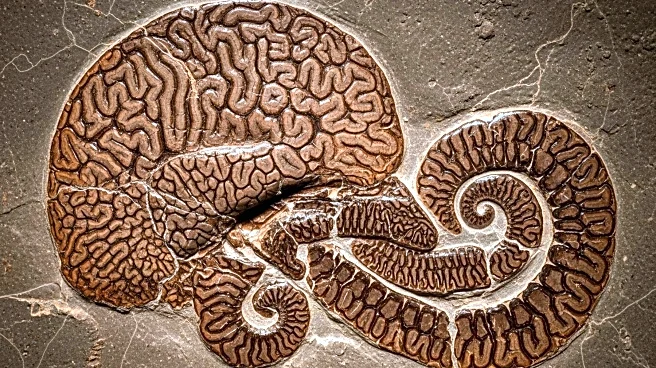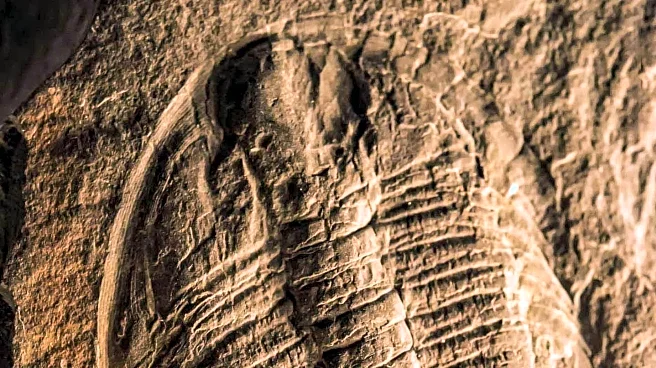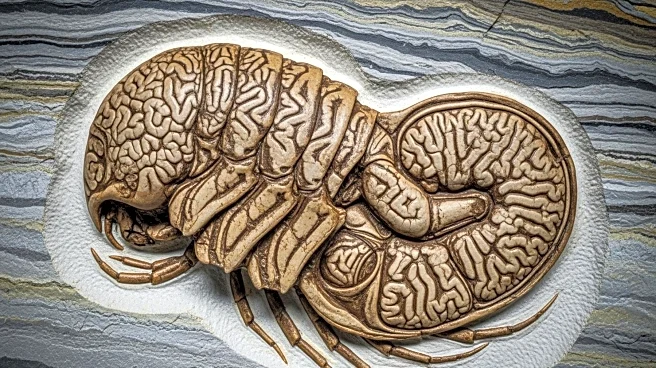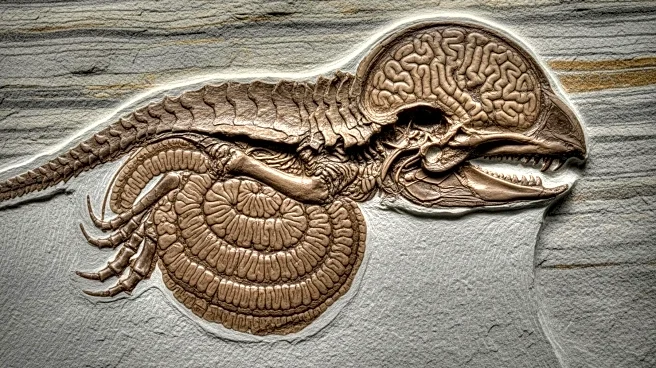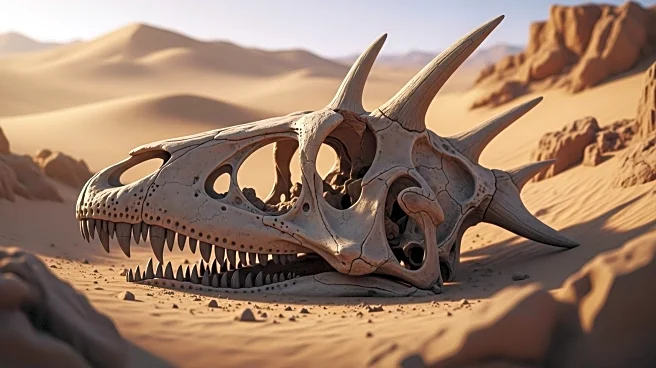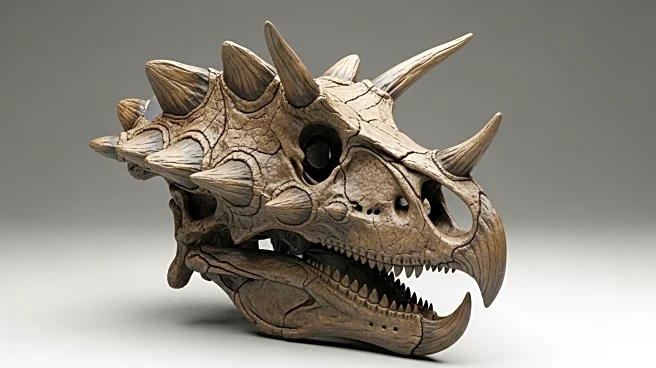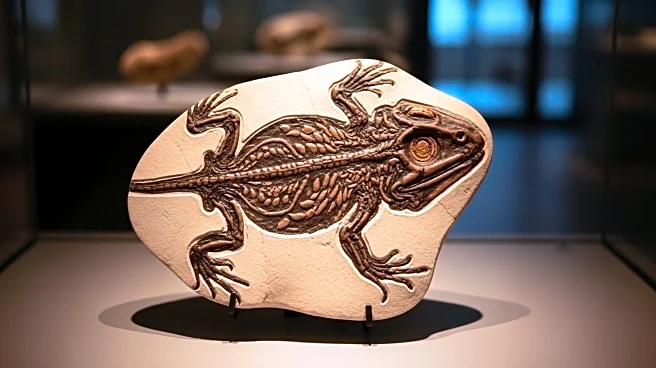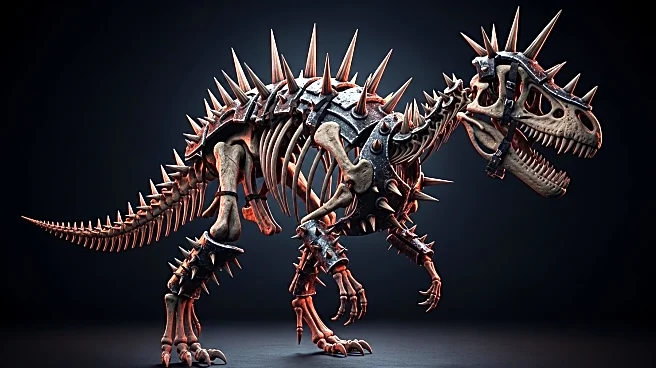What's Happening?
Researchers have uncovered a 520-million-year-old fossil of an arthropod larva with remarkably preserved soft tissues, including a brain, digestive glands, and circulatory system. The discovery was made using synchrotron X-ray tomography, which allowed scientists to create detailed 3D images of the fossil. This find provides an unprecedented look into the complexity of early arthropods and offers new insights into their evolution. The fossil's preservation is considered almost perfect, revealing intricate features that have survived for half a billion years.
Why It's Important?
This discovery is significant for the field of paleontology as it offers a rare glimpse into the soft tissue anatomy of ancient creatures, which is typically not preserved in fossils. The detailed preservation of the fossil allows scientists to study the evolutionary development of arthropods, a group that includes insects, arachnids, and crustaceans. Understanding the complexity of these early organisms can provide insights into the evolutionary processes that led to the diversity of life forms present today. The find also highlights the potential of advanced imaging techniques in uncovering new information from ancient fossils.
